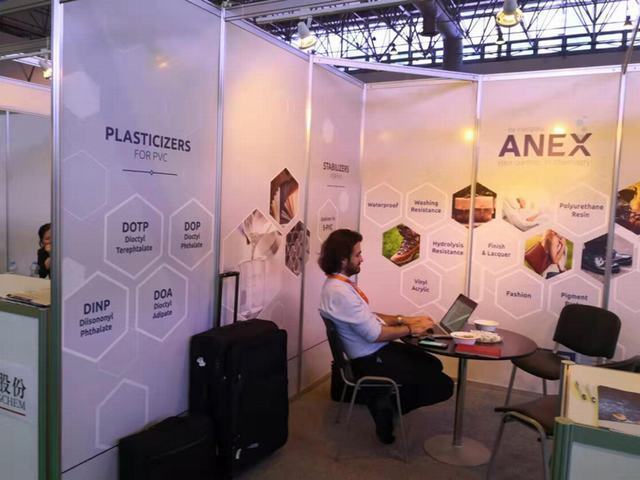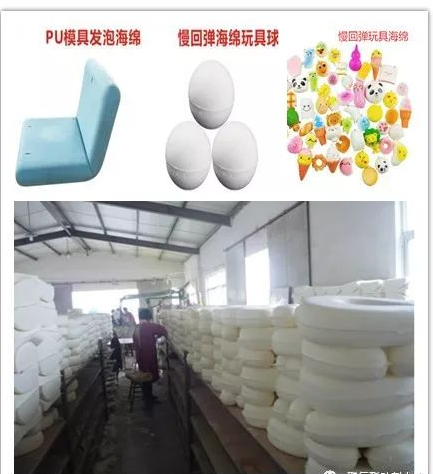Application of redispersible emulsion powder in concrete art mortar
The development of concrete surface artistry
1
Concrete, as an economic and easy to formulate and process building material, has excellent physical and mechanical properties, durability, practicality and reliability, and is widely used in civil engineering construction. However, it is inevitable that if only cement, sand, gravel and water are mixed, what is obtained at this time is ordinary concrete, whose appearance is less pleasing to the eye in tone, and easy to ash and return to salt frost. Therefore, indoor concrete floors are usually covered with cladding materials such as carpet, vinyl or tile, and walls are mostly covered with paint, tile or finishing mortar, wallpaper as a decorative layer.

Today, the concrete art mortar finishing process has become one of the highly respected means of artistic concrete surfaces in North America and Australia. This originated in the 1950s, the concrete surface embossing pattern process (stampedconcrete), that is, in the fresh concrete surface sown with colored hardener, through the use of pattern molds and release agents, in the concrete surface molded to simulate natural forms of texture patterns, such as granite, marble, slate, cobblestone or wood texture weave, to meet the people’s demand for natural materials decorative This is to meet the demand for natural materials for decorative effects. This technology is not only suitable for fresh concrete, but also for the renovation of existing concrete surfaces, such as courtyards, garden paths, driveways, swimming pools, shopping malls and hotel floors. The decorative effect of this so-called artistic mortar surface has a natural realism and uniqueness, which can refresh the dull appearance of concrete, and also integrates decorative and functional, with the economy, durability and practicality of concrete, but also combines aesthetics and creativity organically.
In contrast, the life expectancy of common concrete substrates far exceeds that of commonly used cladding materials, while carpet and vinyl are susceptible to tearing, sticky stains and abrasion, as well as water damage, and these flooring materials need to be replaced every few years. Artistic mortar finishes, on the other hand, are as durable as concrete and are hygienic, easy to maintain, and their decorative effects can easily be achieved to match the surrounding architectural style and blend in with the surrounding landscape. Unlike carpet or vinyl veneers, art grout is less susceptible to tearing, staining, abrasion or water spillage; there are no fibers or cracks to hide dust or allergens, and it is easy to sweep or rinse and requires minimal maintenance. Compared to the process of embossing patterns on a new concrete surface, the art mortar surfacing process is simpler, faster and more economical.

The key to the composition of artistic mortars
2
Unlike traditional ordinary plastering mortars, artistic concrete surfacing mortars must contain organic polymers in addition to pigments, which is what we call polymer-modified dry-mixed mortar. This polymer modified cementitious surfacing material is composed of cement, aggregates, pigments and VIN Janus redispersible emulsion powder as well as other additives, which can be well adjusted by the formula to meet the various performance requirements of constructability and hardening.
Polymer-modified cement-based surfacing materials were introduced to commercial flooring projects in the 1980s, initially as a thin layer repair material for concrete surfaces. Today’s art topping mortars can be used not only for flooring decoration in various applications, but also for wall decoration. Polymer-modified art finishes can be applied as thin as the maximum particle size of the sand or up to several tens of millimeters thick without fear of peeling or cracking, and more importantly, polymer-modified finishes are more resistant to damage caused by salts, aggressive substances, ultraviolet light, harsh weather conditions and traffic wear.
The redispersible emulsion powder contained in the art surface mortar, with its high adhesive property, can ensure the solid combination of the surface material and the concrete substrate, and give the art mortar good bending strength and flexibility, which can better withstand the dynamic load without being damaged, and make the mortar surface layer can better absorb the internal stress generated by the change of ambient temperature and humidity inside the material and at the interface, avoiding the cracking and peeling of the surface mortar, etc. The use of water-repellent re-dispersible emulsion powder can significantly reduce the water absorption of the surface mortar, which in turn reduces the intrusion of harmful salts to reduce the decorative effect of the surface mortar and the damage to the durability of the mortar.
Modified art surface mortar construction
3
Artistic surface mortars used on existing concrete surfaces should first be grease removed and acid washed. If other surfacing materials such as paint, tile mosaic, adhesives, etc. are present on the concrete, these materials must be mechanically removed to ensure that the art mortar surface is mechanically/chemically bonded to the concrete substrate. For cracked areas, they should be pre-repaired and the location of the existing expansion joints must be retained. After the substrate treatment, the art mortar surface layer can be constructed according to the relevant steps.
Art mortar surface layer embossing process
4
The embossing process is used to obtain a surface with the same decorative effect as the traditional embossed concrete process. The polymer modified cement material interface layer is first applied as thinly as possible using a scraper or trowel to the same thickness as the maximum particle size of the sand. While the putty layer is still wet, the colored art mortar is spread approximately 10 mm thick using a spaced nail rake, troweled to eliminate rake marks, and then embossed with a patterned texture pattern using the same impression as traditional stamped concrete. After the surface layer has dried and set, a pigmented sealer is sprayed. The sealer liquid will carry the color to the low areas to produce an antique style. Once the raised areas are dry enough to walk on, two coats of acrylic clear overlay sealer can be applied on top. Outdoor use of non-slip overlay sealer is recommended. After the first coat of sealer has dried, the non-slip coating will be constructed and the surface layer can usually be stepped on after 24 hours of maintenance and open to traffic in 72 hours.
Art mortar surface coating process

5
The thickness is about 1.5-3mm, suitable for indoor and outdoor applications. The colored putty layer is constructed as above. After the putty layer is dry, the paper tape is randomly pasted on the putty layer to form a pattern, or a paper hollow pattern such as stone, brick or tile is laid, and then the colored art mortar is sprayed on the putty layer using an air compressor and a funnel gun, and the colored mortar material sprayed on the putty is smoothed or overwhelmed using a trowel. This creates a colorful, flat, or non-slip decorative surface. To create a naturalistic effect, gently wipe the surface where the mortar has dried and set with a sponge moistened with colored paste. At the end of a large wipe, repeat the process to deepen or locally intensify the color. You can choose several colors as needed. Once the color highlighting reinforcement is over, let the surface dry properly, uncover the tape or paper hollow pattern, sweep the surface, and apply a suitable covering sealer.
Art mortar surface self-leveling staining process
6
At this stage, the self-leveling art mortar surface is mainly used indoors, usually by dyeing to form patterns, and is commonly used in commercial places such as car show pads, hotel lobbies and shopping malls, theme park floors, and also for floor heating flooring in office buildings and residential buildings. The design thickness of polymer modified self-leveling art mortar surface layer is about 10mm, just like self-leveling flooring mortar construction, first apply at least two coats of benzene propylene emulsion interface agent to close the pores on the concrete substrate, reduce its water absorption rate and increase the adhesion between self-leveling mortar and concrete substrate, then pave the self-leveling mortar surface layer while using an exhaust roller to exclude air bubbles. When the self-leveling mortar is hardened to a certain degree, the relevant tools can be used to carve or cut patterns on it according to the design and imagination, so as to obtain decorative effects that cannot be obtained with other decorative materials such as carpets and tiles, and are more economical. Patterns, artistic designs and even company logos can be applied to the self-leveling surface, sometimes even in combination with the use of cracks in the concrete substrate or the artistic concealment of areas that cause cracks in the surface. Colors can be obtained by adding pigments to the dry-mixed self-leveling mortar in advance or, more often, by a post-staining process in which a specially formulated colorant reacts chemically with the lime component of the mortar, which slightly etches and fixes the color in the finish. Finally the overlay sealer protector is applied.
Covering sealer and varnish
7
The application of overcoat sealers and polishes is the final process for all decorative layers and is used to seal, abrade and waterproof the surface of the art grout with products ranging from high traffic industrial sealers for exterior use to polishable waxes for interior use. Choosing a sealer or wax that matches the color of the artistic mortar finish can intensify the tone and add luster. Clear coats can show antique charm and luster or make chemical coloring show mottled marks. Depending on the amount of traffic in the flooring application, the sealer or wax can be reapplied periodically, but maintenance can be as infrequent as the application of flooring wax. To avoid damage to the artistic mortar finish and traffic wear, the sealer protector can be applied in several coats if there is a high volume of traffic on the floor. Frequent maintenance will maintain the decorative effect of the surface well and extend its service life considerably.
Costs and Limitations
8
Artistic concrete mortar finishes typically cost 1/3-1/2 more on average than natural block materials such as slate or granite, and hard flooring materials such as tile, granite, or decorative concrete may be less expensive than soft materials such as carpet.

